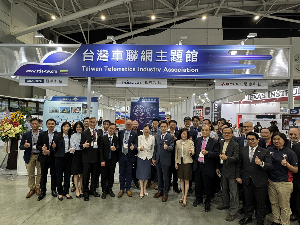MasterImage 3D is focused on enabling 3D as a universal experience on any and all platforms. We believe that in the next five years nearly all content will be available in 3D, across broad arenas, as platforms and applications emerge. Today MasterImage 3D provides digital 3D systems for theaters, auto-stereoscopic 3D display technology for mobile smartphone and tablet devices, and a 3D camera ASIC that enables consumers to create and share 3D content.
We continue to grow very rapidly in the 3D cinema business and are making a large commitment to the 3D mobile business. Just recently, we brought in Roy Taylor from NVIDIA as EVP and GM of our 3D Display business.
We will be demoing our latest autostereo mobile technology at CES this year. Come see it at the 3D@Home TechZone booth. If you miss us there, we will also be at Mobile World Congress in Barcelona in February.
Q: Aren't you active with stereoscopic TVs?
Press and customer reaction to our glasses-free technology has been overwhelmingly positive. As good as it is today we are going to continue to improve it and this is where we will continue to focus. However, we expect our autostereoscopic technology to be ready for the 3D TV market in 2-3 years.
Q: Your glasses-free LCD solution uses parallax barrier. What's the largest display that can be made using this technology?
We currently have solutions for 4-5" smartphones and are equally interested in supporting the 7" and 11" tablet market. It is incredibly compelling to be able to have 3D content on tablet devices. We also are working on scaling the content to notebooks and monitors but a 24" product is not ready today.
Q: We know that Hitachi's Wooo 3D phone is using your technology. Can you tell us who actually manufactures the LCD?
Our technology supports an LCD display stack where we design, manufacture and supply a TN LCD which is face bonded onto a TFT LCD to create the barrier. We can work with any kind of display partner (TFT, OLED, PDP). In the case of Hitachi, we worked with Hitachi Display for their TFT LCD.
Q: How does your solution compare to Sharp's own 3D displays, as used in their new phones and the Nintendo 3DS?
The foundation of the MasterImage 3D display solution is our patented cell-matrix parallax barrier technology. There are other approaches to 3D autostereoscopy, including striped parallax barrier, stacking two thin-film transistor (TFT) displays and lenticular, but we believe that our approach is superior. A "cell gap" approach allows for horizontal and vertical barriers so that a device can play 3D in landscape and portrait. When you combine the research of our parallax technology with our hands-on experience on barrier design optimization, we provide a competitive balance of picture brightness and minimized crosstalk.
As we gear up to deploy the second generation of our autostereoscopic displays it is exciting to see new first-generation products emerging in this space because they are signs that 3D is moving beyond the theater into all aspects of our lives and that glasses-free technology is gaining a foothold.
Q: In your site you mention that the parallax-barrier technology can also be applied to OLED displays. Do you have any experience with such a solution?
MasterImage's solution is compatible with nearly all display technologies, including LCD, OLED, PDP, TFT and others. We have experience developing 3D displays with OLED and respect its brightness and sharpness as a solution. It is a display technology. As we evaluate solutions, we look at each partner with an eye to both cost and marketability.
Q: When do you think we can expect a glasses-free TV (of about 40" size) that has a down-to-earth price?
You hit on the key point - autostereoscopic displays for TVs are possible, but they’re not yet practical. The cost of manufacturing parallax barrier displays for larger screens is still prohibitive. We are optimistic that this will change over the next 2-3 years. A combination of TFT and TN LCDs improving their resolution quality and companies like MasterImage 3D providing wider 3D viewing angles will help bring this about.
Q: You also offer a 3D camera ASIC. Can you tell us the specification of your technology?
We believe that dual lens mobile cameras will become a standard feature on all 3D-enabled smartphones. Capturing and virally sharing 3D user-created content will be a major driver in 3D mobile consumption. Our 3D ASIC combines the left-eye and right-eye images from the two lens of the dual lens camera. Then, it stores the image as a single file format which can be processed by a normal backend camera processor. Our 3D ASICs makes it very easy for handset manufacturers to enable 3D cameras as all dual lens cameras interface with our solution. Since it is small in size and power consumption, it is ready-designed to be a mass-market component.
Q: Are there any 3D cameras on the market that are MasterImage 3D inside?
Our newest technology will be available March 2011.
Q: How do you see the 3D-at-home market in 3-5 years? What role will MasterImage 3D play?
We believe that within the next three years all next-generation smartphones and tablets will be 3D enabled. The display and chip technology are accessible and cost-effective. Plus, 3D greatly contributes to the overall consumer experience. This enhanced experience extends to mobile entertainment content like movies, broadcast television, gaming and apps, but quickly includes emerging content applications for 3D user-interface and business productivity. When you couple the addition of dual lens camera technology being included in mass-market cameras, 3D becomes the expected, not the high-end luxury. In the coming five years, we see 3D display technology as widespread across all of the screens in our lives—mobile, home appliance, automotive, airlines and many others.
Our role at MasterImage 3D is to be customizable to the needs of the entire 3D ecosystem. Thus, we aim to work across 2D display vendors, OEMs and chip architectures. With our existing relationships with Hollywood studios and the addition of Roy Taylor, empowering the imagination of content creators to prioritize 3D across multiple platforms is a strong priority.
(3d-display-info)



















 Around this time every year, IBM surveys 3,000 researchers to find out what they think is going to be big in the future. This year, everyone's caught the FaceTime bug, and is looking forward to 3D hologram video calls.
Around this time every year, IBM surveys 3,000 researchers to find out what they think is going to be big in the future. This year, everyone's caught the FaceTime bug, and is looking forward to 3D hologram video calls.


